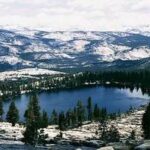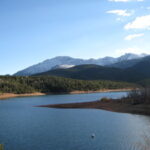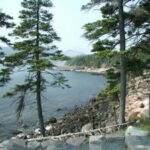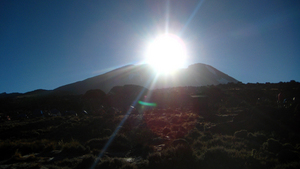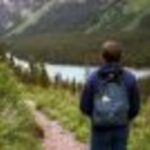A brief description of Mt. Kilimanjaro
Mt. Kilimanjaro is located in Tanzania, Africa and is part of the infamous ‘Seven Summits’. What makes Mt. Kilimanjaro unique from the rest however is the rapid change in vegetation ranging from forest to alpine deserts. The summit is also the only place where you’ll ever find natural snow or ice in the whole of Africa unsurprisingly! The highest point on Mt. Kilimanjaro is Uhuru Peak (5,895 m) which is where all hikers or climbers aim for. The view of the plains surrounding the mountain is just fascinating as well as the sunset if you reach the peak in time!
In order to explain what the journey would be like, I’ll be using tibits of my own experience so those interested can get inside view of what it felt like for a person who is moderately fit. Let me warn you now that Mt. Kilimanjaro is not for the faint hearted but can be achieved by anyone who do some form of exercise! I would say the biggest challenge to overcome is not the physical side of things but is more psychological especially the final trek to Uhuru Peak.
The trek
There are eight different treks available in order to reach the peak. These routes are the Rongai, Loitokitok, Marangu, Mweka, Umbwe, Machame, Lemosho and the Shira. For those with little experience in hiking or aren’t fit as marathon runners then the marangu route is the best bet for you. Most trekking companies will offer 5 days to reach the top such as the company which organised my group’s hike. This is extremely important as it gives time to acclimatize as you’ll be going up a vast distance of altitude in a short period of time. You’ll also have a porter who’ll carry your entire luggage apart from your daypack. These porters are amazing as you’ll see them zipping past you as you hike with your guide (Trust me, you’ll never be able to reach the top without these guys so please pay them decent tips). From now on, I’ll be talking about the journey based on the Marangu route so be prepared to write some pointers down.
After signing in and paying the entrance fee at the Kilimanjaro national park center, you’ll be ready to go with your guide to start your epic journey to the summit. The first day of hiking will involve walking through forest and you’ll find a few local kids just after you start your trek holding chameleons and offering to sell you things such as flags and shirts. Make sure you are wearing decent hiking shoes or you’ll find it unbearable to walk through the whole journey. When I mean decent, I am talking about shoes which you are comfortable with and is also water proof as it often rains during certain seasons. Also make sure you have a jacket which is both rain and windproof. They will come in handy during the whole journey. On day one, you’ll be walking for about 12 km which will last for about 5 hours before you reach Mandara Hut. Like I mentioned earlier, the first day will only be walking through thick forests so be prepared with your camera as you might find a few interesting fauna/floras. The first hut you’ll encounter is known as Mandara Hut. This is possibly the best hut out of the three you’ll be lodging in terms of toilets! It’ll be moderately warm during the day but be prepared with a warm jacket as temperatures will reach between the 10-15C region at night. As for food, you’ll be extremely surprised by what the cooks have to offer. As a starter, I had buttered popcorns which were perfect to revitalize my energy and for dinner there was zucchini soup, pasta and pork with decent sauce! After having dinner, enjoy the scenery and be prepared for your first night at Kilimanjaro as it’ll get brrrrrrrrr freezing cold. Another pointer, make sure you have a sleeping bag which has a temperature insulation of at least -15C or you’ll find yourself suffering from the cold especially at the final hut.
Day 2
Right. You woke up. Feeling fresh again and raring to go. You are about to wear long sleeved pants but STOP! The second day will involve a change in vegetation. You’ll probably be thinking what? Already? But yes after about an hour or so into your trek you’ll be walking on a moorland type vegetation. I strongly recommend shorts, short sleeved shirt and an extra jacket in case. You’ll find no bugs such as mosquitoes as you’ll be well over 3000 m! Trekking through the moorlands was the most enjoyable part of my journey as you could see far ahead and the climate was just excellent with gentle breeze on many occasions. It is also an excellent opportunity to ask your guide questions about Mt. Kilimanjaro and the native language (Make sure you learn the basics such as jambo, hello). Overall, the trek till you reach the moorlands Is moderately easy and you’ll find it that way until you reach the final hut. However, don’t underestimate this mountain because the last part of the trek will take you to your limits. In order to reach Horombo hut, you’ll need to walk for about 15 km which will take about 5-6 hours. As you’ll be starting in the morning, this will give you plenty of time to look around and enjoy the scenery as it is spectacular. Don’t forget to watch the sky at night as you’ll be amazed especially if you’re from a country with lots of air pollution. You may also notice a few lights in the distance at night which is where the main town, Arusha, is. The highlight or reaching Horombo hut would be a certain plant you’ll never ever see anywhere around the world and it is known as the Senecio Kilimanjari unsurprisingly. This plant only grows on Mt. Kilimanjaro as the mountain is the only place in the world with the perfect climate. I won’t spoil it by explaining how it looks like so its up to you whether you are really determined to find out by looking through Google but I recommend you wait till you get up there. If you are spending an extra day at Kilimanjaro (6 days overall) then you’ll be most likely be taken to zebra rock which is an hour walk away from Horombo Hut. From my point of view, the rocks were absolutely fascinating and as the name suggest, they do look like zebras. Now comes the second night. Be warned especially female hikers or maybe even male! You’ll notice a lot of squeaks during the night and they come from small rats which trail for your food. You don’t have to worry about diseases as there is no possible life threatening diseases out there in Kilimanjaro which the rats could have obtained however if you have a fear of such mammals then my suggestion would be to quickly get the top level of the bunk bed if available or else you’ll be having a long sleepless night.
Day 3 and 4
After having a good night sleep (hopefully!) you’ll be finally ready to walk to the final checkpoint before attempting to reach the summit and the final hut is called Kibo Hut. Make sure you try and use the toilet in Horombo as much as possible as you’ll find the open toilet in Kibo absolutely … (no need to mention do I?). Day 3 will involve walking through alpine deserts and what makes it special is that you’ll finally have the view of the peak in front of you while you walk. The most fascinating part I found during this part of the journey was that I was walking through clouds. It isn’t the most fascinating experience you can think of but it’s still pretty cool isn’t it? Along the way you’ll find the last water check point which is where the ocoks get their water supply from. Becareful of what you drink though because who knows what they are doing up there. Day 3 also involves walking for about 15 km and will also last about 6 hours. Try and conserve as much energy as possible as you’ll most likely be attempting the trek up to the summit at midnight. Tip. Make sure you have good sunglasses and sun blocks with an SPF of at least over 30 as this is the point when your skin might feel a bit warm. If you don’t put your sun block on carefully then you’ll find that you’ll have a lot of peeling to do after the trip. The temperature during the day will be moderately cool and wearing a short sleeved shirt should be alright as long as you’re putting on sun block. Once you reach Kibo Hut, have a quick snack and sleep as much as you can as you’ll be facing probably the hardest time of your life at Gilman’s point. You’ll be leaving your main luggage at Kibo Hut as you’ll be returning there once you hopefully make it to the summit. Gilman’s point is clearly seen on your way to Kibo Hut. It is a trek which I dreaded once I was explained by my guide. A good explanation would be an extremely steep gradient and a very curvy path. You’ll be expected to walk in side directions for most of the time as it is too steep to walk in a forward direction. After waking up and getting prepared for the long trek ahead, make sure you get decent amount of energy food in your body as you’ll be needing it for the hours ahead and make sure your water has proper protection so that it won’t freeze. My biggest tip to reach the top is to make sure you always have sufficient water supply or else your body won’t cope especially with the low oxygen level near the summit. The biggest problem I found walking through Gilman’s point was that the ground was mostly made up of sandy materials so every step you took would slightly push you back. Don’t give up hope though! If you managed to carry on for 2-3 hours at Gilman’s point then you’re nearly there so never give up. In my experience, I was walking for 3-4 hours and I was about to give up as the trek seemed endless however I had a caring hike partner and guide who was very encouraging and I would have never made it without them. Right, there’s another tip. If you’re going in a group then make sure who walks alongside you is encouraging and is as determined as you. If you are in a two and your partner quits then you’ll have to go back with him as you’ll most likely have one guide between two and you must be with a guide for the whole time. Once you reached Gilman’s point, you’ll have this sensation which you’ll never ever feel for the rest of your life unless you attempt Mt. Everest that is. Although Gilman’s point is not the highest point you’re aiming for, it is still the hardest and biggest obstacle one has to overcome and everything else is easy once you’ve reached the point so if you do give yourself a pat on the back and enjoy the view of the crater and the magnificent glaciers surrounding it. The journey from Gilman’s point to Uhuru Peak is fairly easy unless you still feel the pain but keep yourself going or else the guides will end up pushing you to the top! That’s how friendly they are. That is all I have to say about the whole journey. If you make it to Uhuru Peak. Congratulations! You have just achieved a feat which probably 1% of the whole world may have only achieved.
Others
Out of the 21 members in my hiking group only 6 made it to the top as the rest got altitude sickness. Make sure you see your doctors about prescribing altitude sickness pills if you feel you are one who may get it.
